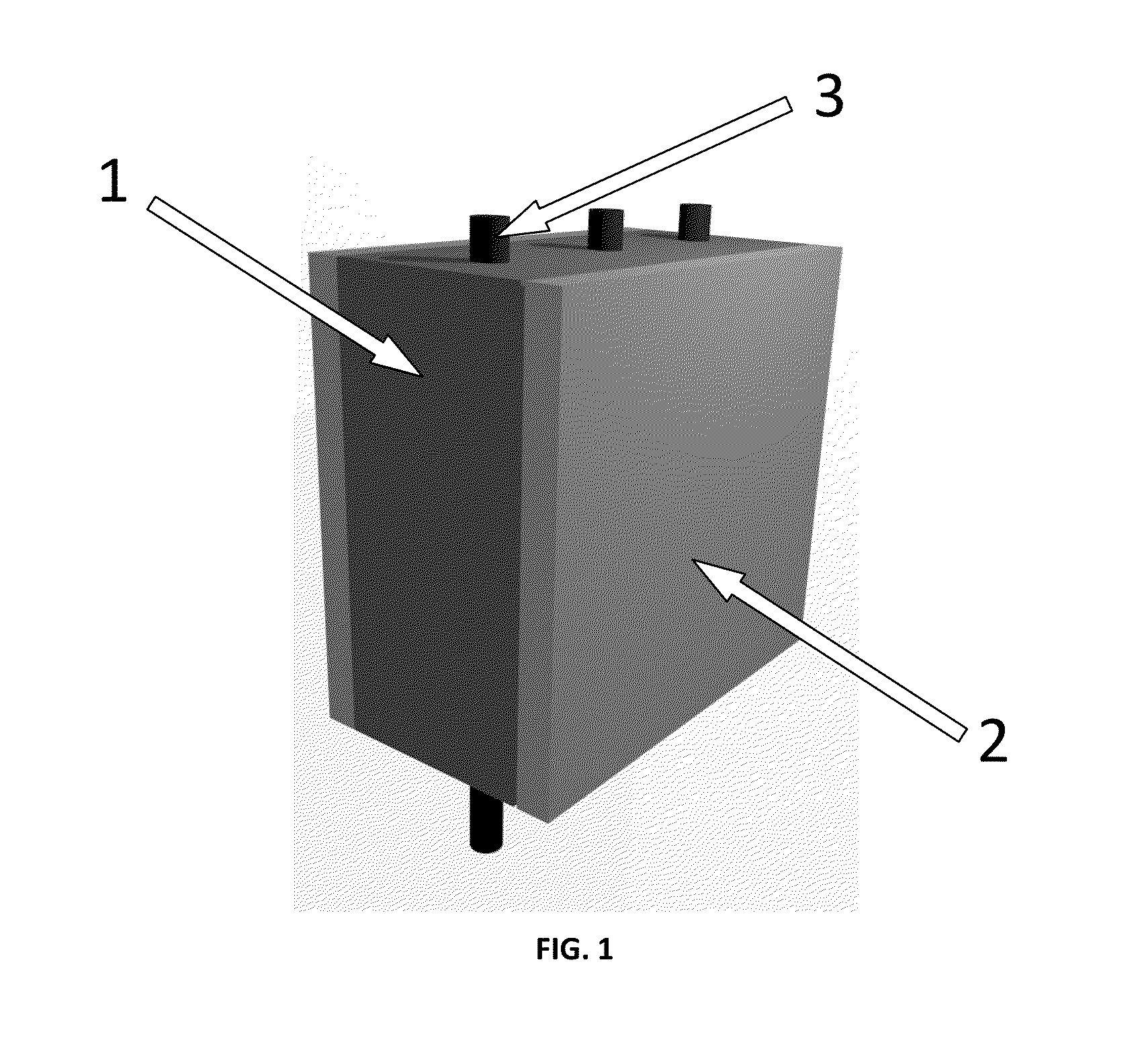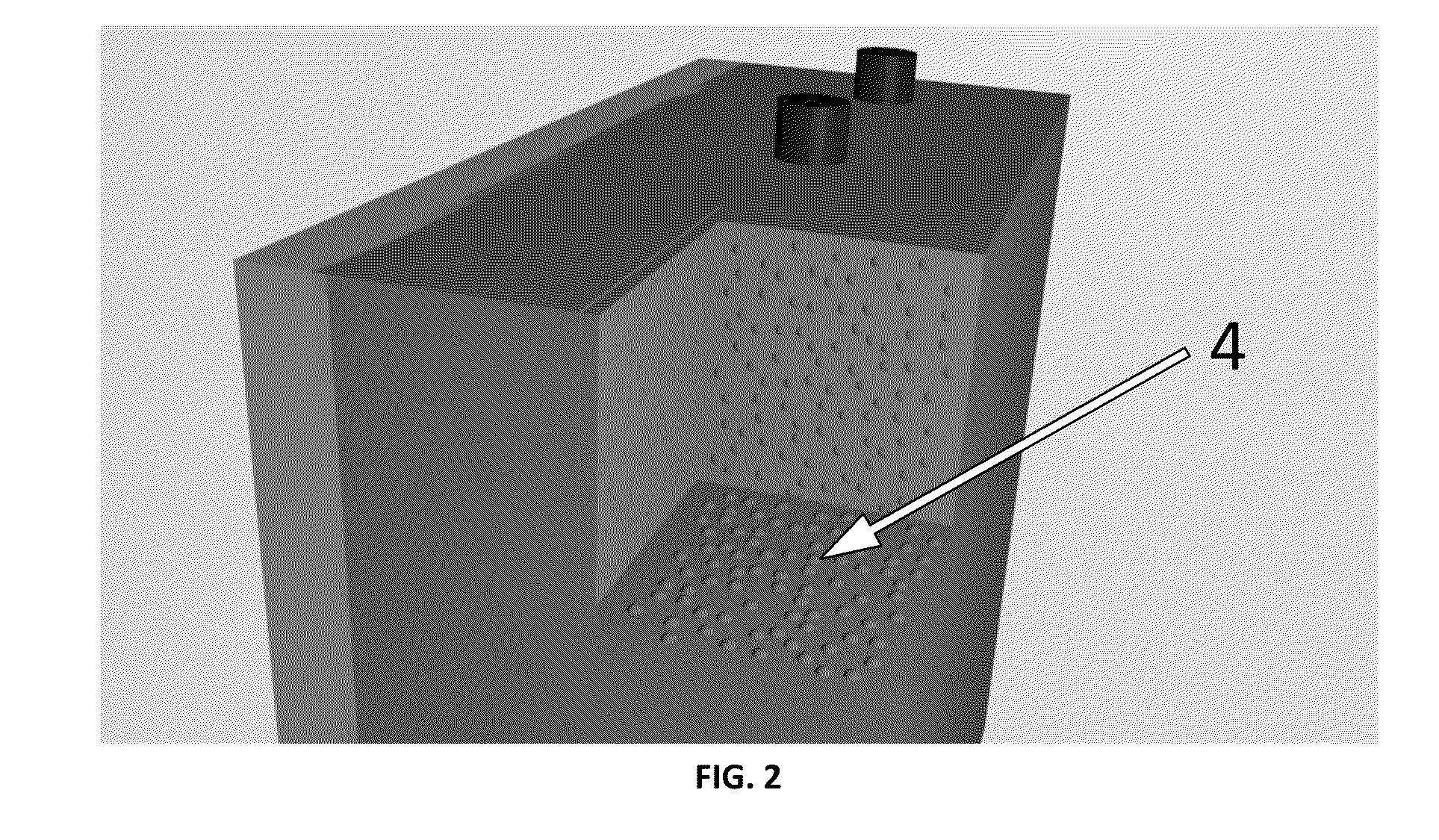Composite wall panel with low thermal conductivity and sufficient strength for structural use
a technology of composite wall panels and structural use, applied in the field of composite wall panel systems, can solve the problems of easy cracks in both foamed concrete and foamed concrete, less practical than directly reducing the overall thermal conductivity (k) of the envelope of buildings, and severely degrade the transport properties and carbonation resistance of foamed concrete. good thermal insulation properties, good barrier resistan
- Summary
- Abstract
- Description
- Claims
- Application Information
AI Technical Summary
Benefits of technology
Problems solved by technology
Method used
Image
Examples
example 1
[0032]The thermal insulation property of foamed concrete is illustrated in this example. FIG. 4 shows the setup including a normal concrete 7, a foamed concrete 8, a FRCC layer 9 on both normal concrete 7 and foamed concrete 8 surfaces, an infrared lamp 10 and a thermocouple meter 11. The specimen size of the normal concrete 7 and foamed concrete 8 is 300 mm (length)×200 mm (width)×100 mm (depth). The density of normal concrete 7 and foamed concrete 8 are about 2400 kg / m3 and 1300 kg / m3 respectively. Since the present invention is a composite wall panel comprised of foamed concrete core and one or more FRCC layers, a FRCC layer 9 is cast on foamed concrete 8. To have a fair comparison, the same FRCC layer 9 is also cast on a normal concrete 7 with the same thickness. The infrared lamp 10 is used to simulate the situation where external wall is exposed to sunlight. With the infrared lamp 10 continuously shining on the FRCC layers 9 (for 2 hours in this example), the temperature of th...
example 2
[0035]For the composite wall panel of the present invention to serve as precast external wall, sufficient structural strength is required. Compared to ordinary foamed concrete which can only provide compressive strength of less than 15 MPa, the foamed concrete of the presently disclosed composite wall panel can provide 4-70 MPa compressive strength depending on the composition design of the concrete core, as shown in our experimental results. The composition design of the foamed concrete core is shown in Table 2. With different designs of composition, the density and compressive strength of the foamed concrete core are adjusted. The trend of 28-day compressive strength against plastic density of foamed concrete is shown in FIG. 5. From the results, the foamed concrete of the present invention with plastic density higher than 1400 kg / m3 can provide 28-day compressive strength higher than 25 MPa. For the foamed concrete with plastic density 1600 kg / m3, a 28-day compressive strength of...
example 3
[0037]This example serves to illustrate the concerned properties of the fiber reinforced cementitious composite (FRCC) used for preparing the protective layer of the present invention.
[0038]The FRCC composite used for the protective layer preparation comprises cement, fly ash, water, lightweight filler, silica sand, discontinuous polyvinyl alcohol (PVA) fiber, superplasticizer and Hydroxypropyl Methyl Cellulose (HPMC). The examples of different proportions of the components in the composite, expressed as parts by weight, unless otherwise indicated, are tabulated as follows:
TABLE 3LightweightFiberMix No.CementFly ashWaterSandfillerHPMCSP(vol. %)1100.350.1650.0650.00110.0151.7520.670.330.350.1650.060.00110.0081.7530.50.50.350.1650.0650.00110.0071.7540.20.80.350.1650.050.00110.0071.75where SP = superplasticizer
[0039]The cement used is Type I Portland cement (BS 12:1996, 52.5N) from Green Island Cement Co. Limited, Hong Kong. The fly ash is supplied by the CLP Holdings Limited, Hong Kon...
PUM
| Property | Measurement | Unit |
|---|---|---|
| compressive strength | aaaaa | aaaaa |
| plastic density | aaaaa | aaaaa |
| mean length | aaaaa | aaaaa |
Abstract
Description
Claims
Application Information
 Login to View More
Login to View More - R&D
- Intellectual Property
- Life Sciences
- Materials
- Tech Scout
- Unparalleled Data Quality
- Higher Quality Content
- 60% Fewer Hallucinations
Browse by: Latest US Patents, China's latest patents, Technical Efficacy Thesaurus, Application Domain, Technology Topic, Popular Technical Reports.
© 2025 PatSnap. All rights reserved.Legal|Privacy policy|Modern Slavery Act Transparency Statement|Sitemap|About US| Contact US: help@patsnap.com



